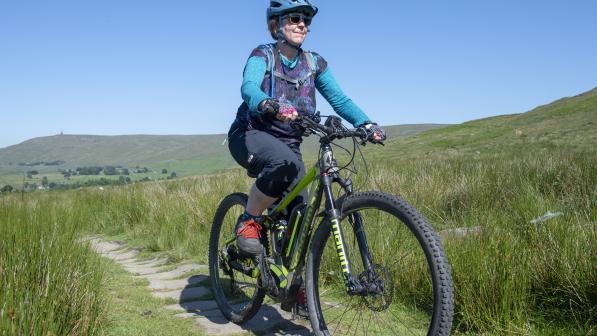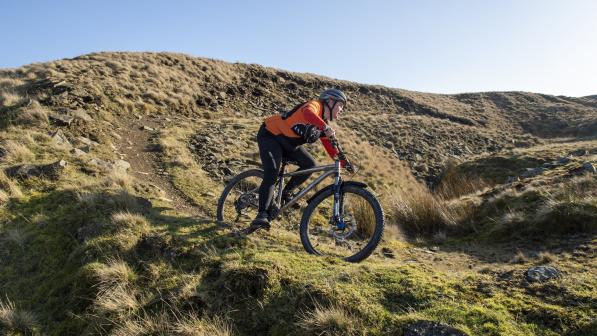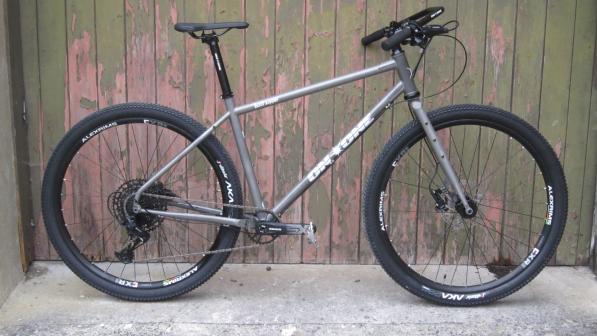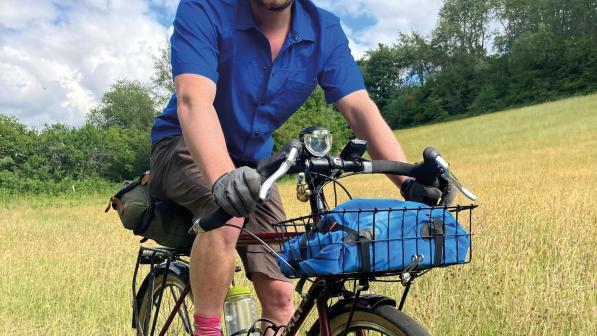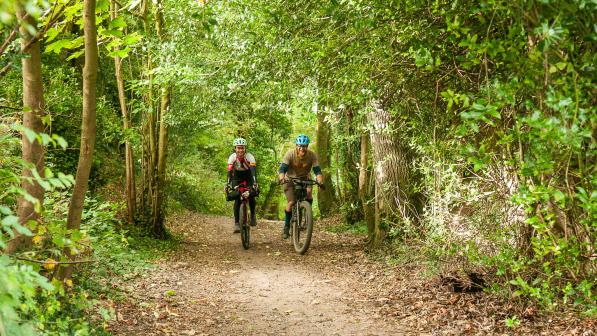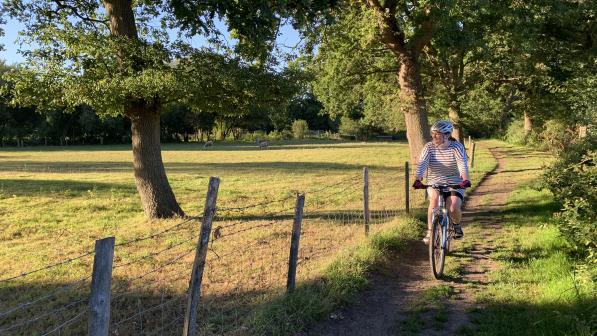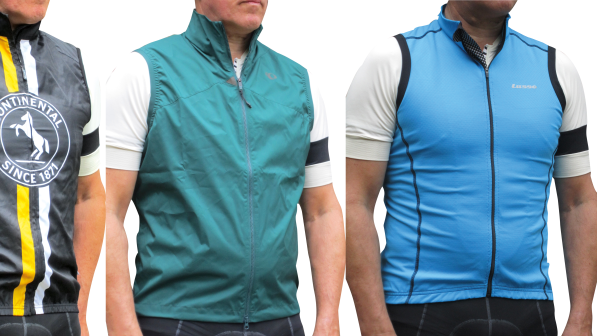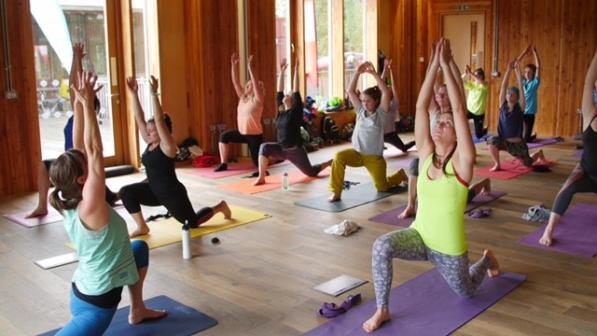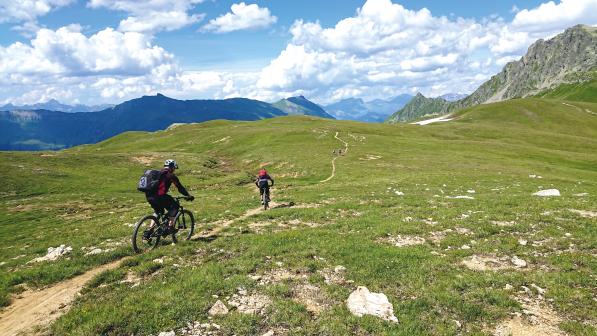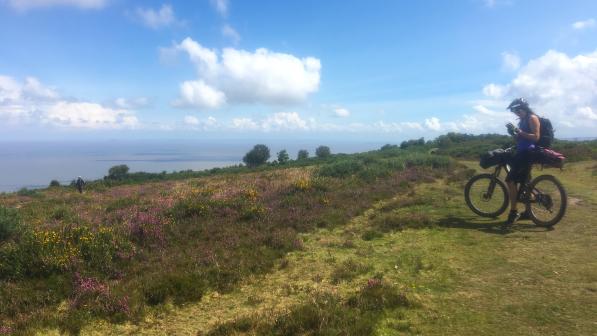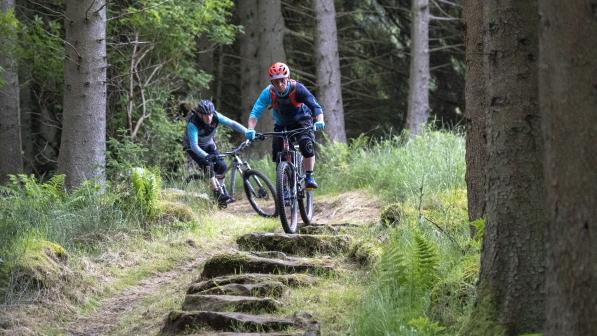What to wear mountain biking

Lycra vs Baggies
If you’ve been riding on the road or enjoying a spot of cross-country mountain biking, you might have an abundance of Lycra in your wardrobe. While this is fine to wear, and rather lovely and airy in the summer, it doesn’t offer much protection for your skin when you start experimenting with new terrain. Brushes with trees, prickly bushes and the occasional mud slide will be much more bearable when there’s a layer of clothing between them and you.
Hence, most ‘trail riders’ tend to choose some knee-length baggy shorts and a loose-fitting tops for most of the year. In winter I will often wear long-sleeved tops and winter jerseys with trousers, but even in the coldest months, this can still get a bit hot, so the key is choosing layers that you can easily add or remove during a ride.
Crash protection
Another reason for baggy shorts and trousers is to accommodate some crash protection. I always wear knee pads, and I also wore elbow-pads when I first started – trust me, they got used!
Slim pads, with thin foam or basic abrasive material, offer a little bit of protection to your skin without restricting your movement, but they don’t offer any impact protection. The more substantial pads, with technology such as ‘D30’, offer shock-absorbing materials that protect you from impact, but on the flip side they are often bulky and warm to wear.
It’s entirely up to you what you try first, but if you think you might take part in enduro mountain bike races, knee pads are a good idea. They’re often mandatory race wear anyway.
Body armour is also available, and many people feel more confident riding technical terrain in chest and back protectors. However, these can get hot and sticky, and are often overkill for anything outside of a bike park or a technical trail centre.
Helmets
Sure, your road and cross-country helmet will work fine, but trail- and enduro-orientated helmets will offer more coverage, often giving you more protection further down the back of the head. While knocks to the head are rare, riding on technical terrain can be unpredictable, and you’ll find that there is no common direction for falling off your bike, so the more coverage you have the better.
Mountain bike helmets often have visors to keep the sun out of your eyes, too. While you may be used to wearing sunglasses to protect your eyes, technical off-road riding often takes you away from bright sunshine to dark woods, and everywhere in between, so clear lenses are the best for all-round, year-long riding, and the visor will keep your eyes sheltered.
Shoes
Now, this is a personal thing. Even professional riders are torn between clipless shoes and flat pedal shoes. Basically, stick with what you are comfortable with for now. Riders from a cross-country or road-cycling background tend to stick with clip-in pedals and, although some say you should learn skills in flat shoes, I personally think you should gain experience in whatever you are already confident in.
If you don’t have any off-road shoes, but you want to start in clip-less (SPD style) shoes, try to find a shoe you like with a wide and flat sole. Combine it with a pedal that has a large profile or one that looks a lot like a flat pedal, as this offers good stability and balance when standing up on the bike. Trust me, you’ll be doing that a lot. That being said, I know plenty of riders still trail-riding in cross-country shoes.
If you want to ride with flat pedals, a good set of riding-specific flat shoes will offer much better grip than trainers.

Wet and wild winters
If you’re super keen, you’ll probably still want to ride in the wet. Frankly, I don’t blame you, as mud is a fun way to learn skills with a soft landing!
When it’s wet, you can pop any waterproof jacket on, but a Gore-Tex (or similar breathable material) will prevent that boil-in-the-bag feeling. You may want to look out for stretchy waterproof fabrics for a good range of movement too, but they don’t come cheap. Waterproof shorts are also a great idea.
In autumn and spring, you’ll likely still be warm (or even too warm) in shorts and a jacket, but the depths of winter may call for an added mid-layer winter jersey or merino wool jumper. Trousers can help keep your shins warm and dry too.
I’d recommend investing in some waterproof socks, or simply keep those tootsies toasty when wet with some thick merino socks. The key is to use layers so that you can disrobe anything that gets too cosy and pop it in your backpack or hip pack.
Women’s kit
There’s really not much to add to women’s clothing, other than to simply say “wear whatever you feel comfortable in”! It seems obvious, but it stands to reason that feeling good will help you ride to your best ability.
Women’s clothing is available, and often offers a bitter fit for curves, but if you like a looser fit, then grab some men’s clothing. If you’re short, slender or petite, you may find that women’s clothing offers smaller sizes to fit you better.
Women’s helmets don’t tend to be any different in fit, but women’s-specific shoes will be more slender in the foot. Also, women’s riding backpacks are better at accommodating breasts, as well as offering a more slender fit and shorter torso size.
Ready to ride?
So there you have it. Cross-country mountain bikers can simply slip on a pair of shorts and some knee pads and be ready to go, but the full enduro look requires baggy clothes and wide shoes, with slightly more protection from the helmet and a set of knee pads.
Add a backpack to carry your extra layers and tools in (and to offer you a little crash protection to your back) and you’re good to go. It may all seem like a genre fashion, but it’s all function really. Get out there and have fun, and you’ll soon learn what works and what doesn’t.
Pedal on!

Anna Cipullo is an experienced mountain biker who writes about cycling. To find out more about her visit Anna’s website.
